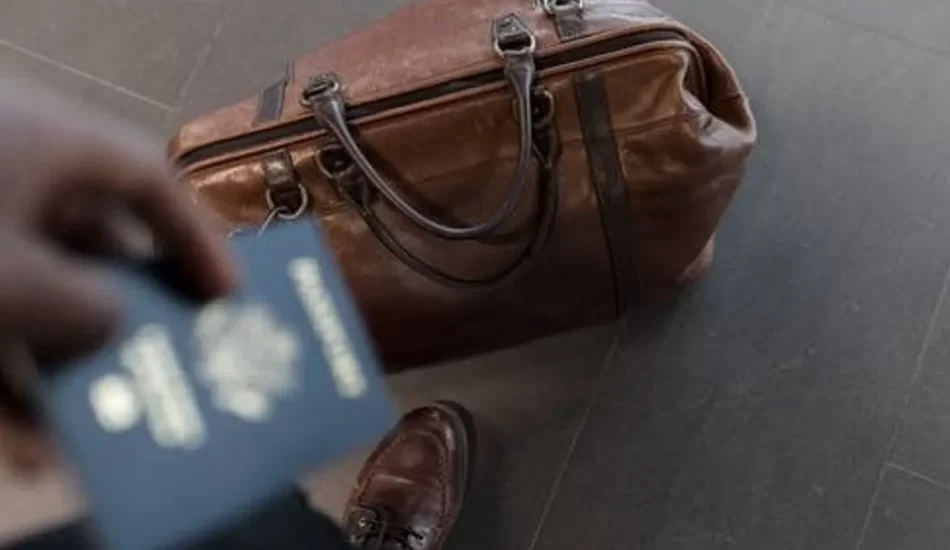Can you visit the US while your I-130 is pending?

When applying for a visitor visa to temporarily travel to the United States, the most important thing you must do is prove to the government that you do not have “immigrant intent.” In other words, you must prove to the US government that you do not intend to remain in the US beyond the time permitted on your visa, and you must show that you have strong ties and connections to your home country (such as close relatives, land or property, or your own business) which you are unlikely to abandon.
Given this, it is no surprise that applying for a temporary visitor visa when you are currently the beneficiary of a pending I-130–which is the first step toward obtaining an immigrant visa–would be difficult. If your spouse or other family member has filed an I-130, Petition for Alien Relative, on your behalf, then it may be challenging to convince a consular officer that you do not have “immigrant intent” in the US. Nevertheless, it is possible to visit the US with a pending I-130, and we have seen many clients do it.
There are many reasons you might want to visit the US while your I-130 is still pending. Most commonly, foreign relatives or spouses of US citizens plan to travel to the US for weddings, family vacations, or due to an illness or medical emergency of a family member. In these cases, individuals who do intend to immigrate permanently to the US at a later date may still have the option to visit temporarily before their immigrant visa case is approved.
Here’s what to do if you are the beneficiary of a pending I-130 and you live in a country that participates in the Visa Waiver Program (ESTA) or you already have a valid B1/B2 Visa:
If you reside in a country that allows you to travel to the US through the visa waiver program (ESTA), or if you already have a valid visitor visa in your passport, you do not need to re-apply to enter the US. If neither of these apply to you, you will need to first follow steps to apply for a B1/B2 visitor visa (see more information below).
If you’re already authorized to enter the US, you should plan to be prepared when passing through customs. This is when you will need to provide documents and possibly complete a short interview with a Customs and Border Protection (CBP) official. There is always a risk that they will not allow you to enter the US due to your pending immigrant visa application.
When attempting to travel into the US as a future intending-immigrant (once you’ve made it to the airport or other Point of Entry), it is a good idea to carry a “pocket letter” from your immigration attorney. This type of letter can help explain to the border officer the purpose of your travel and will address any potential inadmissibility issues that may prevent them from letting you enter the country. The letter should be accompanied by supporting documentation of the event you are attending or the purpose of your trip.
Pocket letters are often addressed to the visa applicant rather than the border officer, though they will be presented to the border officer when the purpose of the trip is questioned. The letter summarizes the purpose and timeline of the trip and reminds the applicant of the requirements they must complete in order to obtain their immigrant visa; for example: “As you know, your immigrant visa interview was recently scheduled for August 15th, 2019. You must return to India to complete your medical exam at least 2 weeks before this date.”
Here’s what to do if you are the beneficiary of a pending I-130 and you DO NOT live in a country that participates in the Visa Waiver Program (ESTA) and you DO NOT already have a valid B1/B2 Visa:
If you do not qualify for ESTA and do not have a valid B1/B2 visa. You must first apply for a visitor visa through the US Embassy or Consulate in your country. At your interview, you must provide documentation of your ties to your home country and your intent to return their immediately following your trip to the US.
A B1/B2 Visa Applicant should provide the following information and documentation at their interview:
- The purpose of the trip to the U.S. is limited to pleasure (no business or income generating purpose)
- The trip is for a specific limited time
- The visa applicant has sufficient funds to cover the trip to the U.S, all living expenses while in the U.S., and the return trip home.
- The applicant must show that they intend to return to their residence outside the U.S. This is shown by demonstrating they have a residence outside the U.S. that they do not intend to abandon and that they have other ties outside of the U.S. Family and financial ties in their home country are good examples of their intention to return home.
There is always a chance that the interviewing office will be hesitant to issue a visitor visa to someone who has already applied for an immigrant visa. It is important to be extremely well-prepared and to know what to expect during the interview, as well as at the Point of Entry. You can read more about applying for a visitor visa here.
